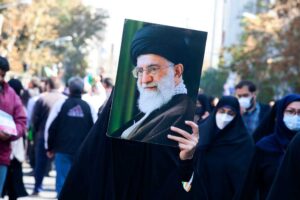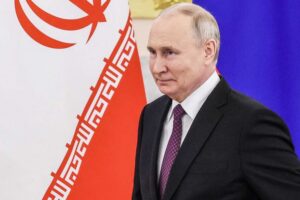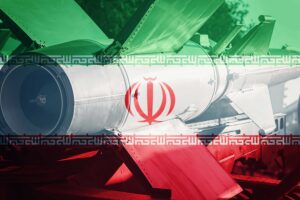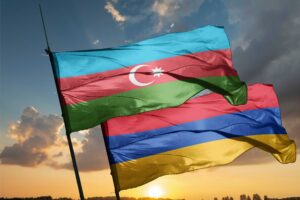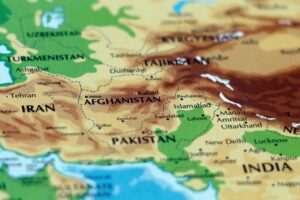Are nuclear weapons still relevant to global security? Compared with the nuclear confrontation in the depths of the Cold War, nuclear weapons and deterrence appear to have lost their salience. Considering the conflicts in which the major powers have engaged, the focus in strategic studies has pivoted to counterinsurgency, counterterrorism, and sub-conventional conflict.[i] With regard to nuclear weapons, the focus has shifted to the risks of the spread of nuclear capabilities (nuclear proliferation).[ii] The instrument to prevent the emergence of new nuclear powers is the Nuclear Nonproliferation Treaty. There are five recognized nuclear powers in the NPT (the United States, the United Kingdom, France, Russia, and China) and currently all non-nuclear states have signed the NPT, undertaking not to possess or develop nuclear weapons. The nuclear-armed states outside the NPT are Israel, India, Pakistan, and North Korea. The success of the NPT is a corollary of the relative stability in many regions. The regions where states are considering going nuclear or have already done so are those where there is a persistent risk of large-scale armed conflict.[iii]
Two particular states of concern are North Korea and Iran. Both countries became members of the NPT but did not declare all nuclear facilities to the IAEA as required in order to conceal their respective military nuclear programmes. The reaction to the nuclear weapons programmes of Iran and North Korea was very different compared to Israel, Pakistan, and India since the latter countries never joined the NPT in the first place. By failing to meet their treaty obligations, Iran and North Korea came to be considered as engaging in activities that violated international law.[iv] Negative perceptions were further entrenched because Iran and North Korea were seen as conducting very aggressive foreign policies while simultaneously being relatively politically and diplomatically isolated. In the case of Iran, it involves Iranian troops or militias fighting outside the country and very sophisticated networks of terrorism involving Hamas and Hezbollah[v]. In the case of North Korea, an aggressive military posture with over 900,000 troops at readiness just across the demilitarized zone, the constant use of military threats as part of North Korea’s diplomacy, the ambition to unify the Korean peninsula under the rule of Pyongyang, as well as the large scale of human rights violations inside the country put North Korea in a different category.
North Korea’s Nuclear Weapons Programme
The perception that Iran and North Korea are “irrational actors” – too dangerous to be permitted to have nuclear weapons – has been central to US rhetoric and policy. Both the public rhetoric and the behaviour of these two states seems to give some credence to this view, but it does not stand up to close scrutiny. In the case of North Korea, the outbreak of full-scale war is prevented by nuclear deterrence and the high risks of casualties in a conventional war. Meanwhile, the DPRK has resorted to low-level military actions and military diplomacy to prosecute conflict. The realist explanation of North Korea’s behaviour is that the DPRK is seeking to maximize its power and behave as a state normally does reacting to a hostile environment. The problem with that explanation is that it is insufficient to explain the dynamics of North Korean foreign policy. North Korea behaves as if it can ignore the disparity of power between it and the United States. Despite its relationship with China, North Korea is not “bandwagoning” with China and no longer has a reliable security guarantee from Beijing. North Korea engages in risky confrontations with South Korea and the United States that provoke harmful non-military coercive responses (e.g. sanctions) and at times takes risky military actions (sinking of naval vessels, attacks on artillery positions, interception of naval vessels). The other element of North Korea’s policy that is not explained by realism is the cycle of confrontation and cooperation that seems designed to provide North Korea with certain economic benefits, which are then lost again. Conflict transformation theory suggests that this is the pattern in a persistent conflict in which one side is dissatisfied with the status quo, but the presence of nuclear weapons prevents a full-scale war and therefore, neither side has the capability to resolve the conflict in its favour.[vi]
The United States has responded to the situation by using the mechanisms of the UN Security Council and unilateral sanctions to compel North Korea to abandon its nuclear programme in return for normalized political relations and economic benefits. Various efforts to achieve this over the decades, including the spectacular summit diplomacy between Donald Trump and Kim Jong-un have failed because North Korea was never fully prepared to give up the nuclear card, and the aggressiveness of the regime and its persistent and egregious human rights violations have inhibited the United States from fully accepting the regime as legitimate. The efforts to denuclearize North Korea are based on a contradictory set of beliefs about the North Korean leadership. On the one hand, it is believed that the North Korean leadership has such a disdain for international norms and is so irrational that deterrence is ineffective and that therefore a policy of containment is too dangerous. On the other hand, we can be very generous to North Korea to achieve denuclearization, and once this is accomplished, the problem is solved, and North Korea can be treated as a normal country. This ignores the fact that the nuclear program is a consequence of the persistent conflict on the Korean peninsula and that denuclearization itself will not resolve it. In recent years, the crises stirred up by North Korea’s provocative missile launches, nuclear tests, and the threats of “fire and fury” from the United States concealed the fact that the strategic situation on the Korean peninsula is actually quite stable and that, despite the fiery rhetoric, a full-scale war is highly unlikely. In other words, nuclear deterrence is effective.
North Korea’s cycle of confrontation and cooperation moved to the cooperation phase to cash in on the fruits of its military diplomacy after the Winter Olympics in South Korea, but due to the US sanctions policy North Korea did not reap any tangible benefits. Complete denuclearization remains an unlikely prospect. [vii] The conclusion of this analysis is both comforting and troubling at the same time. Major war is increasingly unlikely in Korea. The effectiveness of strategic stability in Korea is underestimated. The more developed the nuclear arsenal becomes, the less likely a major war is going to be. The bad news is that strategic stability means that the protagonists are not forced to resolve the conflict. It would take a major geopolitical shift to change this. In Korea this might occur if China decides to change its policy on Korea.
Iran’s Nuclear Weapons Programme
The acquisition of nuclear weapons by Iran would constitute such a dangerous threat to international security such that almost any means would be legitimate to avert such a development.
The situation with Iran is quite different. Iran is involved in a long-standing conflict with its Sunni Arab rivals, which involved an eight year long war with Iraq and various other conflicts in the Middle East including a current civil war in Yemen, in which Iran and Saudi Arabia are confronting each other indirectly. Various scholars, commentators, and politicians assert the acquisition of nuclear weapons by Iran would constitute such a dangerous threat to international security such that almost any means would be legitimate to avert such a development, regardless of the consequences.[viii] This line of argument constitutes the “fallacy of the absolute threat”. The threat is articulated in such a way so as to negate all conventional means (such as diplomacy and deterrence) to mitigate it, only to discover that other options (improved military capabilities, resort to military threat or actions) are either ineffective, impractical or politically unacceptable.[ix] Historically, nuclear weapons have been political weapons that are believed to accord status, geopolitical influence, and deterrence against external aggression.[x] If nuclear weapons are actually used, all of these benefits disappear and given the existence of adversaries with a superfluity of nuclear capabilities, and with the disappearance of all restraints against the use of force, such a reckless course of action would almost certainly result in the end of the regime, if not the total destruction of the country.
Though most experts agree that it is not desirable that Iran should have nuclear weapons, it is not clear that such a development would create an unmanageable threat for the region or the United States.
For this reason, it is wholly implausible that Iran would transfer nuclear weapons to other parties and allow them to control how and when nuclear weapons might be used. It is not at all clear whether the possession of nuclear weapons will make Iran more aggressive and dangerous. A likely consequence is that other states in the region will seek to balance Iran by closer cooperation with the United States and reliance on extended deterrence. This means that Teheran’s political options will narrow and it will have to act with greater restraint. In any case, even though most experts agree that it is not desirable that Iran should have nuclear weapons, it is not clear that such a development would create an unmanageable threat for the region or the United States. One consequence of a nuclear-armed Iran might be that the United States might be more constrained in terms of its military options in the region. But the fact is that the United States is already severely constrained (to some extent as a result of the Iraq War) and has not responded with the use of force to very severe provocations on the part of Iran (even during the Trump administration); it is hard to see how this situation will change if Iran goes nuclear. There is no reason to believe that Iran cannot be effectively deterred from using nuclear weapons, given the global conventional and nuclear power projection capabilities the United States already possesses, and Iran also faces a nuclear-armed Israel. Unlike North Korea, Iran has remained a member of the NPT and therefore still has a treaty commitment not to possess or develop nuclear weapons.
The “Nuclear Agreement” (known as the Joint Comprehensive Plan of Action – JCPOA) reached on 15 July 2015 eliminated most capabilities of concern, including substantial stockpiles of partially enriched uranium and committed Iran to enhanced inspections by the International Atomic Energy Agency. The Trump administration abandoned the agreement for domestic political reasons.[xi] Iran kept to the restrictions of the JCPOA until July 2019 and after the killing of General Soleimani by the Trump administration in January 2020 it announced its rejection of all limitations on its nuclear programme. Since then, Iran has resumed uranium enrichment. Although Iran is believed to have the capacity to assemble a nuclear device within a few months, there is no evidence that Iran is preparing to test a nuclear warhead.[xii] The Biden administration has initiated negotiations for a return to a nuclear agreement. Iran is using its increasing stockpile of fissile material as a bargaining tool to maximize concessions (in particular sanctions relief) from a reluctant US government, but the indications are that Iran is interested in ultimately returning to a framework similar to the JCPOA.[xiii]
The United States government considered the disarmament agreement with Libya’s Muammar Gaddafi, which permitted Libya to come out from the cold of isolation in return for giving up its nuclear programme, as an example to be followed in other cases. Likewise, the Bush administration considered the intervention in Iraq in 2003 that toppled Saddam Hussein because of his alleged Weapons of Mass Destruction, as a warning to others. Particularly after the intervention by NATO that toppled Gaddafi the North Koreans drew the opposite conclusion, namely to have nuclear weapons is essential for their security.[xiv] The Iranians never admitted to having the goal of a nuclear arsenal, and therefore the response to fall of Saddam Hussein was more related to the immediate implications such as the severe instability in the region as well as the new opportunities for Iran to assert itself. US Intelligence estimated that the Iranian military nuclear programme was halted in 2003, but no link to the Iraq War has been established. It did not stop Iran from signing on to the nuclear agreement (JCPOA) during the Obama presidency. [xv]
Conclusion
The experience with North Korea and Iran has established some important insights. If a state decides to go nuclear, the international community can impose severe sanctions and shift the calculus against nuclearization. However, if a state is resolute in its determination to acquire a nuclear capability, it is not possible to prevent it short of an all-out military conflict and regime change. The experience of the Iraq War, which was launched because of alleged stocks of weapons of mass destruction, teaches however that wars of counterproliferation do not necessarily contribute to global security; quite the reverse.[xvi] The risk from new nuclear states may well be overstated and nuclear weapons can have a stabilising effect on regions marked by instability. Diplomacy and deterrence rather than armed conflict remain the most appropriate tools to deal with emerging nuclear weapons states.
[i] Christoph Bluth, “Global Security in the Post-Cold War Era and the Relevance of Nuclear Weapons”, Journal of Strategic Security Analyses, Vol.VII, No1, 70-104.
[ii] Joshua S. Goldstein, Winning the War on War: The Decline of Armed Conflict Worldwide (London: Dutton 2011), 24, Christopher J. Fettweis, C.J., Dangerous Times? The International Politics of Great Power Peace (Washington, DC: Georgetown University Press, 2011), 31.
[iii] Andrew Futter, The Politics of Nuclear Weapons (Basingstoke: Palgrave Macmillan 2020), p.3.
[iv]Christoph Bluth, Crisis on the Korean Peninsula (Potomac Books: Dulles VA 2011); David Patrikarakos, Nuclear Iran, (IB Tauris London 2021).
[v] Daniel L. Byman, “How terrorism helps — and hurts — Iran”, 6 January 2020, https://www.brookings.edu/blog/order-from-chaos/2020/01/06/how-terrorism-helps-and-hurts-iran/ (accessed on 17 November 2021).
[vi]Christoph Bluth, “The Paradox of North Korea’s nuclear diplomacy: Insights from conflict transformation theory. North Korean Review. 13(1): 45-62.” 2017; Saira Khan, Nuclear Weapons and Conflict Resolution – the Case of India-Pakistan, (London, Routledge 2009).
[vii] Mark E. Manyin, Nikitin, Mary-Beth D,), Emma Chanlett-Avery Nuclear Negotiations with North Korea Paperback, (Congressional Research Service: Washington: DC May 2021.
by Mark E. Manyin (Author), Nikitin, Mary-Beth D, (Author), Emma Chanlett-Avery.
[viii]See Matthew Kroenig, “Time to Attack Iran”, Foreign Affairs, February 2012.
[ix] Matthew Kroenig, “Time to Attack Iran”, Foreign Affairs, February 2012.
[x]Lawrence Freedman, The Evolution of Nuclear Strategy (Basingstoke, Palgrave 2003).
[xi] “Trump Withdraws U.S. From ‘One-Sided’ Iran Nuclear 18-05-08”. The New York Times. May 8, 2018. Accessed on 17 November 2021.
[xii] Christoph Bluth, “Iran nuclear capability is more likely bluff than bombs”, The Conversation, 10 August 2021.
[xiii]Julia Masterson, “Iran Edges Toward Resuming Nuclear Talks”, Arms Control Today , October 2021.
[xiv] Stephen Evans, “The Saddam factor in North Korea’s nuclear strategy”, BBC News, 9 September 2016.
[xv] Ray Takeyh. “Iran’s Nuclear Calculations”, World Policy Journal, Vol. 20, No. 2 (Summer, 2003), pp. 21-28; Congressional Research Service, Iran’s Nuclear Program: Status, CRS report RL 34544 (Washington DC: 2019).
[xvi] Jeremy Greenstock, Iraq: The Cost of War, (Cornerstone Digital, London 2016).



